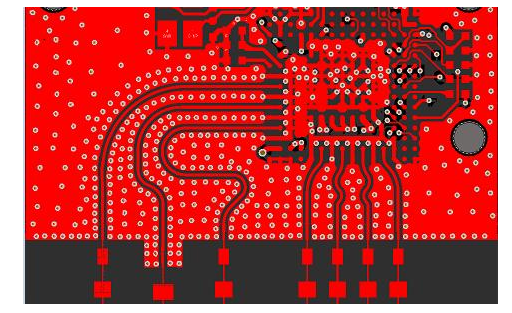What is the use of circuit board recycling
With the development of my country's electronics industry, the elimination of waste electronic products, household appliances, etc. is increasing. At the same time, a large number of waste circuit boards are produced. At the same time, we can also see that some people specialize in recycling waste circuit boards. So, what is the use of these used circuit boards? For details, follow the editor of the circuit board factory to find out.
In today's electronic age, smart appliances are completely flooding our lives. Every smart appliance or non-smart appliance is controlled by a circuit board, and each circuit board has its own life span, which is the expiration period. Some appliances are directly affected by external connections and become obsolete appliances and cannot work. . This directly leads to the production of waste circuit boards.
The hazards of the circuit board:
In the world, billions of circuit boards are shipped from circuit board manufacturers every day. In everyday life, there are probably hundreds of millions of tons of waste circuit boards piled up. Once the accumulation of circuit boards occurs, it will cause harm to our ecological environment and human health over time. No matter which piece of circuit board will produce organic pollution to the society. In addition, the electronic components on the PCBA board will also cause pollution. The most important pollution is metal pollution, especially heavy metals such as tin, lead and cadmium, which directly endanger human health.
Professionally speaking, waste printed circuit boards are a mixture of glass fiber reinforced resin and various metals. They are typical electronic waste. If they are not properly handled and disposed of, they will not only cause a large loss of useful resources, but also contain cadmium and A large number of teratogenic, mutagenic and carcinogenic substances such as brominated flame retardants will cause serious harm to the environment and human health.
At present, waste iron recycling methods generally use direct burial, incineration, water washing and cracking, but they all release toxic substances, which are likely to cause serious secondary pollution of the air or soil. The national environmental protection policy does not allow this. Or rather restrict these processing modes. The best method for recycling waste circuit boards internationally is the physical method. The most notable feature of this method is that it has the advantages of low environmental pollution, high comprehensive utilization rate, and large added value. It is the development trend of electronic waste treatment in the future; The disadvantage is that the treatment cost is slightly higher than that of incineration or water-washing recycling treatment mode. Due to the toughness of waste circuit boards, mostly flat, it is difficult to separate metals and non-metals through one-time crushing, and it contains many kinds of substances, and the separation and decomposition process is complicated. These characteristics determine the recycling and treatment of waste circuit boards. A certain degree of difficulty.

In the electronic waste, although the recycling and processing of the circuit board is difficult, it has a fairly high economic value. The taste of metal in circuit boards is equivalent to dozens to hundreds of times that of ordinary minerals. The metal content is as high as 40%, and the most is copper. In addition, there are gold, tin, nickel, lead, silicon and other metals. There is no shortage of rare metals, and the content of rich ore metals in nature is usually only 3-5%. In addition, the non-metallic waste residues of waste circuit boards can be used as construction materials. At the same time, materials such as solder and plastic on waste circuit boards are also important resources that can be recycled.
Therefore, more and more circuit board recycling plants are established, which provide the ultimate destination for a large number of waste circuit boards, and can better protect the environment and their own health.
There are various chips, capacitors, pole tubes and other parts on the circuit board, which can be recycled. At the same time, there are various metals such as gold plating, tin solder, and copper framework on the board. The main process of its recycling is as follows:
1. Process A: Recover all kinds of chips, capacitors, and pole tubes.
The first step: heating: put the circuit board on the coal stove and heat it to soften;
Step 2: Extraction: extract various chips, as well as electronic components such as capacitors and pole tubes;
Step 3: Classification: classify various chips and electronic components;
Flow direction and use: Transferred to Shenzhen and Dongguan electrical appliances factories, directly used for the production of new products;
2. Process B: Extract solder.
Step 4: Heating: Put the circuit board from which various chips and electronic components have been removed on the stove separated by iron plates or pans to continue heating. Solder such as tin on the top will melt and drip onto a pan or iron plate, collect it and melt it and sell it.
3. Process C: Extracting gold: (mainly in the suburbs, currently this type of production is extremely hidden)
Step 5: Acid bath: Various things on the circuit board have been removed, if there is a gold-plated part on the circuit board, put it in a strong acid solution;
The sixth step: reduction: the gold in the strong acid is reduced to low purity gold;
The seventh step: heating and refining: further purify the low-purity gold to make gold with higher purity;
Flow direction and use: Sold for industrial gold.
4. Process D: Extracting copper.
Step 8: Collect: Collect various copper-containing circuit boards from which all appendages have been removed;
Step 9: Transshipment and smelting: Transship to Qingyuan for blast furnace smelting and smelting into low-quality copper alloys;
Flow direction and use: sold to smelters in Zhuzhou and other places for separation, smelting and purification.